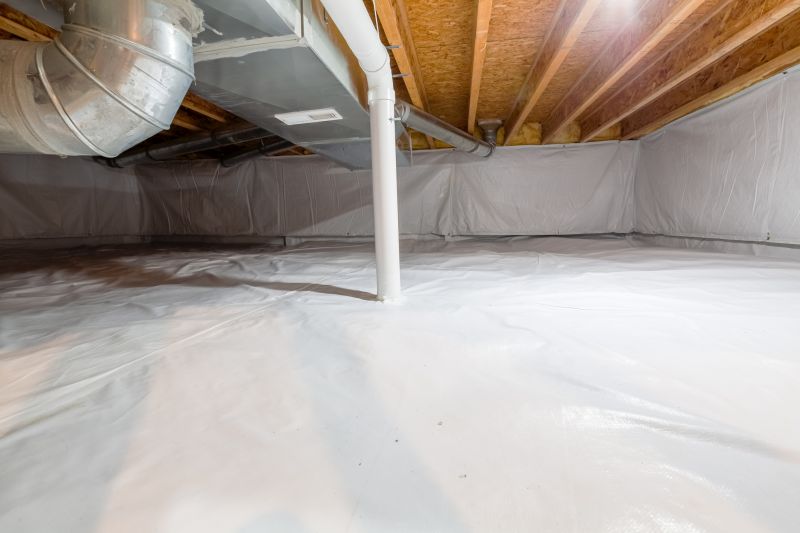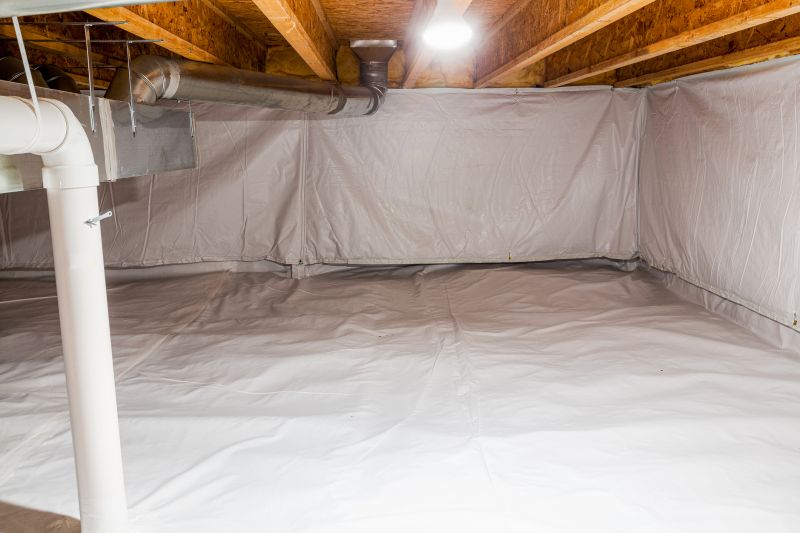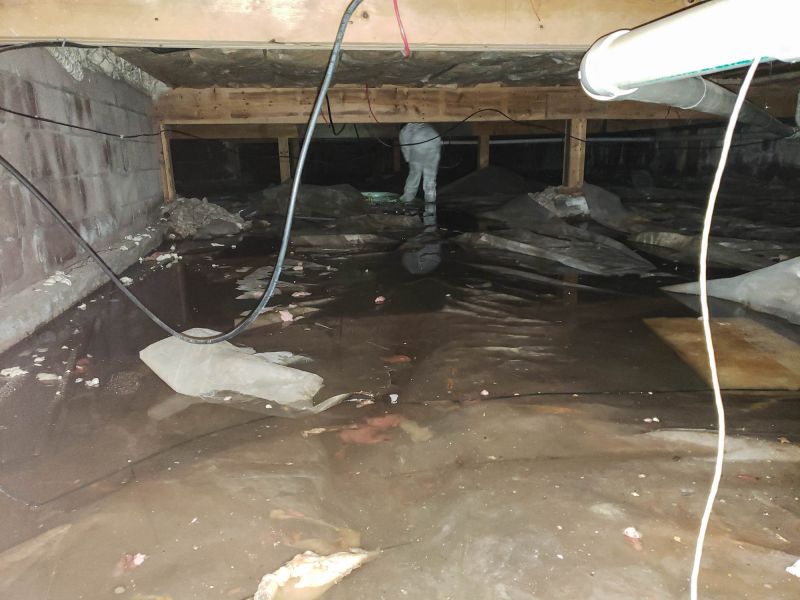Custom Crawlspace Encapsulation Options
Crawlspace encapsulation is a comprehensive process that involves sealing and insulating the crawlspace to prevent moisture intrusion, improve air quality, and enhance home energy efficiency. Proper encapsulation can significantly reduce the risk of mold growth, wood rot, and pest infestations, which are common issues in unsealed crawlspaces.
Encapsulation helps eliminate excess moisture that can lead to mold and structural damage, creating a healthier environment inside the home.
Sealing the crawlspace reduces energy loss, lowering heating and cooling costs by maintaining a more consistent indoor temperature.
Sealed crawlspaces prevent mold spores, dust, and allergens from entering the living areas, promoting healthier indoor air.
A properly encapsulated crawlspace deters pests such as rodents and insects from nesting in hidden areas.

A finished encapsulation with vapor barriers and insulation installed, demonstrating a clean, sealed environment.

Showcasing the use of durable vapor barriers and insulation materials for optimal moisture control.

Illustrating a moisture-free, insulated crawlspace that contributes to overall home health.

A sealed crawlspace designed to prevent pest entry and nesting.
Neglecting crawlspace encapsulation can lead to serious issues. Unsealed crawlspaces are prone to moisture accumulation, which can cause mold growth, wood rot, and increased energy costs. Studies indicate that homes with unsealed crawlspaces can experience up to a 15% increase in heating and cooling expenses. Additionally, moisture and mold can negatively impact indoor air quality, contributing to respiratory problems and allergies. Pest infestations are also more common in unsealed crawlspaces, creating further health and structural risks.
| Risks of Not Encapsulating | Potential Consequences |
|---|---|
| Moisture Intrusion | Mold growth and wood rot |
| Poor Air Quality | Increased allergens and respiratory issues |
| Energy Loss | Higher heating and cooling costs |
| Pest Infestations | Rodents and insects nesting in the crawlspace |
| Structural Damage | Foundation issues and compromised support |
| Increased Maintenance | Frequent repairs and cleaning |
| Health Risks | Allergies and respiratory conditions |
| Decreased Home Value | Potential appraisal and resale impacts |

